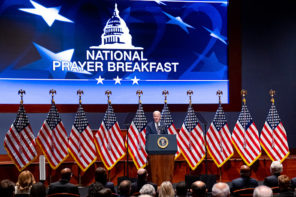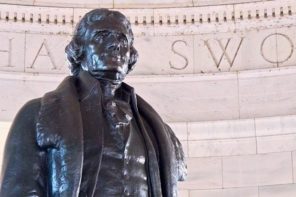Among the items scheduled for inclusion in the National September 11 Memorial and Museum when it opens in Spring 2014, is a pair of World Trade Center steel beams in the shape of a cross. This artifact was dubbed the ‘Ground Zero Cross’ by Fr. Brian Jordan, OFM, who celebrated mass at the foot of this cross during the recovery effort, later spearheading an effort to preserve it.
David Silverman, President of American Atheists reflects on why they chose to resolve this issue using legal means.
The cross was installed without regard to minority religious opinions. Our requests to include our own memorial, or to dedicate an existing artifact to those atheists who died on 9/11, fell on deaf ears. This outright exclusion, combined with the fact that the cross was originally intended to represent “all people of faith” clearly shows intentional bias against non-Christians in the very place where such bigotry is least appropriate. The board of the WTC Memorial has made the decision to bring religion into the memorial and start this fight, and American Atheists will do what we can to see that those atheists who died at the hands of religious zealots on 9/11 will not be shoved to the side—or excluded altogether.
Rob Boston, Senior Policy Analyst for Americans United believes the inclusion of the cross won’t be seen by the court as a violation of the First Amendment:
Cases dealing with the display of religious symbols by government tend to hinge on the facts. The court will look at the nature of the display, how it is presented, where the display occurs, the message it conveys and other factors.
In light of this, I believe it is unlikely that a federal court will declare the display of the so-called Ground Zero Cross a violation of church-state separation. Courts are likely to say that the twisted metal is a historical artifact from the 9/11 tragedy and hold that its display in a museum is not a violation because it does not have a primarily religious purpose. They will probably liken the cross to the display of art with religious themes in publicly-supported museums. The purpose of those paintings is not to further religion but to educate about the many themes in art. Likewise, the cross will be perceived as one of many artifacts that survived a dark day in American history.
Following a judge’s decision in March to dismiss its claim, American Atheists filed paperwork for an appeal to the Second Circuit Court of Appeals. The ongoing lawsuit is analogous to American Atheists’ placement of a public monument to atheism alongside a Christian monument in Starke, Florida. In both cases, they argue that under the equal protection clause of the 14th Amendment, government cannot favor one religion over other faiths. In their view, a Christian symbol can be placed on public land provided that there will be equal representation of those from different faiths, including those who call themselves nonreligious.
Also, this fight points to a pattern of non-theists’s voices being excluded in the wake of national tragedy. Non-theists were denied the opportunity to participate in a healing service attended by President Obama held in response to the Boston Marathon bombings; and atheist groups’ relief efforts following the tornadoes that hit Oklahoma in May 2013 were nonexistent, as Time columnist Joe Klein claimed, despite evidence to the contrary.




